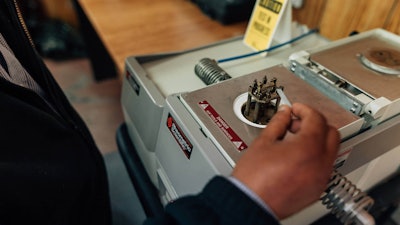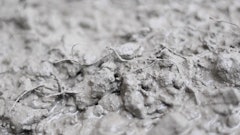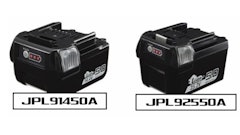
Concrete contractors are increasingly turning to GFRP (glass-fiber reinforced polymer) products as the building material of choice for concrete structures. GFRP products are 1/4 the weight of steel which can often mean less need for heavy lifting equipment or extra labor. This can be factored into your scheduling when planning your labor, project timeline, and equipment requirements.
These composite materials are commonly used in concrete construction projects like retaining walls, foundations, and other reinforced structures. The most common types of GFRP products used in these applications include rebar, rock bolts, dowels, form ties, and thermal insulation pins. They are corrosion-resistant, lightweight, non-electrically conductive, excellent thermal insulators, easy to work with, have high durability, and have a long service life. They also provide excellent resistance to cracking, shrinking, and thermal expansion/contraction. With just a few tips and strategies, you can work with GFRP composites safely and efficiently to create long-lasting structures including bridges, concrete panels, seawalls, and more.
 184,000 pieces of 38 mm GFRP Mateen Pultron dowels were supplied In the construction upgrade project for the Port of Rotterdam Container Terminal, Netherlands (2019).Pultron Composites
184,000 pieces of 38 mm GFRP Mateen Pultron dowels were supplied In the construction upgrade project for the Port of Rotterdam Container Terminal, Netherlands (2019).Pultron Composites
How to Store GFRP Composites
Take reasonable care and use common sense. Ensure the products aren’t damaged during storage. Products that are designed to be buried in concrete do not need any UV resistance for the application, so typically do not have any UV inhibitors added. If they are to be stored for a long period of time, they should be covered or otherwise kept out of direct sunlight. They should be kept clean and inspected before use.
More on GFRP
Bekaert Shares the Advantages of Fiber Reinforced Concrete - In this Digging Deeper episode from 2019, Curt Bennink sat down with Tim Lussier, national sales manager with Bekaert Corporation, to talk about fiber reinforced concrete and how it offers concrete contractors savings in both labor and materials.
Purchase Quality GFRP Products
 A dynamic mechanical thermal analysis test is done for quality testing of the GFRP's full cure.Pultron Composites
A dynamic mechanical thermal analysis test is done for quality testing of the GFRP's full cure.Pultron Composites
Choose a manufacturer with a comprehensive quality program and a laboratory equipped with a Differential Scanning Calorimeter (DSC) and a Dynamic Mechanical Thermal Analyzer (DMTA). These specialized instruments are used to determine the glass transition temperature and degree of cure of composites. Both test methods are critical components of any pultrusion quality control program.
The strength, durability, and quality of the GFRP product you purchase are one of the most important criteria to consider, as it will directly affect your end product. Some GFRP products may be cheaper, but may not last as long or perform as well as higher-quality materials.
 GFRP rock bolts can be installed with bolts in tunnels and mines.Pultron Composites
GFRP rock bolts can be installed with bolts in tunnels and mines.Pultron Composites
How to Work with GFRP Products in Concrete Construction
When working with GFRP composite products, there are some distinctions to be made. Rebar, dowels, and forms are good examples of how working with GFRP differs from working with steel or stainless steel.
Working With GFRP Rebars
The design of the structure and the differences between GFRP and other materials must be considered. For example, you can’t simply swap steel rebar for GFRP. The material properties are different, and these must be considered in the design. Fortunately, there are codes such as the ACI 440 series of documents, which covers design codes, product performance, and quality. The engineers should become familiar with these codes.
Similar to steel rebar, it must be correctly placed and held firmly for the concrete pour. Bars, except those to be placed in vertical mats, should be tied at every intersection when the spacing is more than 30 cm (12 in.) in any direction. Where the spacing is less than this, the bars should be tied at every intersection or at alternate intersections. Ties maintain the position of the reinforcement during the pouring and setting of concrete. They do not need to provide permanent strength to the structure.
Always ensure bars do not float upwards and out of position during concrete placement and consolidation. If movement is detected, the pour should be halted whilst additional support or fixtures are added. GFRP rebar can be used and tied in with steel bars. The same tying method as steel should be used in order to achieve the best performance.  A dynamic mechanical thermal analysis test is done for quality testing of the GFRP's full cure.Pultron Composites
A dynamic mechanical thermal analysis test is done for quality testing of the GFRP's full cure.Pultron Composites
Nicks, scrapes, and cuts that do not exceed 5% of the depth of the bar are acceptable. Beyond 5% we recommend the replacement of the bar or using a lap splice on either side of the damaged bar. However, GFRP rebar is not like coated steel rebars, so small surface scratches do not need to be repaired to protect the bars from corrosion; they are corrosion-resistant all the way through.
Due to the nature of GFRP rebar, bends cannot be bent on-site. All bends are factory-made and delivered to exact specifications. A variety of shapes, stirrups, and bespoke bends can be produced.
Working With GFRP Dowels
GFRP dowels are designed for low bond strength, so do not require greasing or other bond-breaking preparation methods. This makes them quick to install and long-lasting. GFRP dowels can be installed using standard installation methods including slip-form pavers, baskets, and dowel insertion machines.
Working With GFRP Form Ties
Most form-ties within the concrete are designed to be broken off or unscrewed. The remaining holes are then filled with mortar or ready-made plugs. This slows the process considerably, leading to lost production time and increased costs.
GFRP form-ties are designed to stay in the concrete and are sawn off when the concrete is set, leaving a concrete-colored ‘plug’ that blends well with the concrete. No filling of holes with mortar is required.  Here, the GFRP for the Port of Rotterdam project, Pultron dowel are supplied ready for construction professionals.Pultron Composites
Here, the GFRP for the Port of Rotterdam project, Pultron dowel are supplied ready for construction professionals.Pultron Composites
Safety Measures for Working with GFRP Products
Dust and fibers may cause temporary skin itching due to the glass fibers. When working with GFRP products during construction follow these health and safety tips. Standard health and safety practices used on construction sites are usually appropriate.
- Always wear protective eyewear, gloves, long sleeves, and long pants when handling any GFRP product.
- When cutting or drilling GFRP composite products, always wear a dust mask and eye protection to prevent irritation. Where possible, cut in a ventilated area.
- If glass fibers or dust come into contact with your eyes, flush with water for at least 15 minutes and contact a physician if the irritation persists.
About the author
Pete Renshaw is the Business Development Director at Pultron and serves as the Chief Technical Officer for Mateenbar Limited. He has over 25 years of experience working with pultruded composite product development.





























